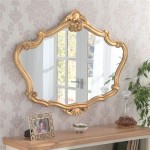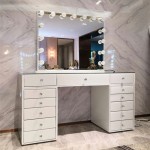Hiding a TV Behind a Two-Way Mirror: An Aesthetic and Functional Solution
Integrating technology seamlessly into interior design has become a significant consideration for many homeowners and businesses. One increasingly popular method for achieving this integration is hiding a television behind a two-way mirror. This approach offers a unique blend of aesthetics and functionality, allowing for a clean, minimalist look when the television is off, while providing a fully functional display when needed. This article will explore the concept of hiding a TV behind a two-way mirror, outlining the benefits, design considerations, installation processes, and potential challenges.
A two-way mirror, also known as a one-way mirror or surveillance mirror, is a specialized glass that appears as a mirror from one side and a transparent window from the other. This effect is achieved by applying a thin, semi-transparent coating of metal, typically aluminum, to one side of the glass. When this coating is illuminated from the viewing side and the other side is dark, the surface reflects light, creating a mirror effect. However, when the un-coated side is brighter than the coated side, the mirror becomes transparent, allowing viewing through the glass.
The application of this technology to conceal a television involves strategically placing the TV behind the two-way mirror. During normal operation, the room lighting will be adequate to render the mirror reflective, completely concealing the TV. Turning the TV on will generate enough light to overcome the reflective properties of the mirror, allowing the image to be seen through the glass. This offers a visually appealing solution for individuals desiring a modern, clutter-free environment.
Benefits of Using a Two-Way Mirror to Conceal a Television
The primary benefit of this approach is the aesthetic enhancement of the room. When the television is not in use, the two-way mirror provides a clean, reflective surface, often appearing as a standard decorative mirror. This eliminates the visual clutter of a large, black screen dominating the room. This is particularly advantageous in minimalist or modern designs where a seamless and uncluttered appearance is desired.
Furthermore, concealing the TV behind a two-way mirror can protect the screen from dust, fingerprints, and potential damage. The mirror acts as a protective barrier, extending the lifespan of the television. This is especially beneficial in high-traffic areas or homes with children. Additionally, it can prevent the accumulation of dust on the screen, reducing the need for frequent cleaning. The smooth, easily cleaned surface of the mirror simplifies maintenance compared to the exposed screen of a traditional television.
Another crucial advantage is the ability to integrate the television seamlessly into the room’s design. The mirror can be framed and incorporated into various design elements, such as integrated wall panels, custom cabinetry, or even sliding doors. This flexibility allows for a cohesive and integrated aesthetic that traditional television placement often disrupts. The mirror can also be a design element in its own right, with various frame styles, sizes, and shapes available to complement the overall decor of the room.
Design and Configuration Considerations
Several crucial design considerations must be addressed when planning to hide a TV behind a two-way mirror. The size and placement of the mirror relative to the TV are critical factors. The mirror should be large enough to completely cover the TV screen and ideally extend beyond the screen’s edges to create a more seamless appearance. The distance between the TV and the mirror will also affect the clarity of the image when the TV is on. A closer proximity generally provides a sharper and brighter image. However, adequate ventilation must be provided to prevent overheating of the television.
Lighting is another crucial factor. The amount of ambient light in the room needs to be carefully controlled. Too much light can wash out the TV image, while too little light can make the mirror less effective at concealing the TV when it’s off. Adjustable lighting systems, such as dimmers or smart lighting, can help optimize the viewing experience. Blackout curtains or shades may also be required to reduce ambient light during daytime viewing.
The type of television used also plays a significant role. LED televisions, with their high brightness levels, are typically better suited for this application than older LCD models. OLED televisions offer superior contrast ratios and black levels, which can enhance the viewing experience behind a two-way mirror. The resolution of the TV should also be considered, with higher resolution screens providing sharper and more detailed images. Additionally, the bezels (the frame around the screen) of the TV should be as minimal as possible to reduce visual distractions when the TV is on.
Finally, ventilation is a critical aspect to consider. Televisions generate heat, and enclosing them behind a mirror can lead to overheating, which can damage the TV and shorten its lifespan. Adequate ventilation must be provided to dissipate the heat. This can be achieved through strategically placed vents, fans, or even a climate control system within the enclosure. The design should allow for airflow around the TV without compromising the aesthetic appearance of the installation.
Installation and Technical Aspects
The installation process for hiding a TV behind a two-way mirror requires careful planning and execution. The first step involves selecting the appropriate two-way mirror and television. The mirror should be of high quality to ensure optimal reflectivity and transparency. The mounting system for the television must be sturdy and secure, capable of supporting the weight of the TV without causing damage to the mirror or the surrounding structure.
Electrical wiring and connections need to be planned meticulously. Power outlets and cable connections should be readily accessible, but also concealed to maintain a clean aesthetic. Surge protectors and power conditioners are recommended to protect the TV from electrical surges and fluctuations. A professional electrician should be consulted to ensure that all electrical work complies with local building codes and safety regulations.
Creating the frame or enclosure for the mirror and television is a crucial step. The frame can be custom-built from wood, metal, or other materials to match the room’s decor. The frame should be designed to accommodate the mirror, the television, and any necessary ventilation systems. The mirror should be carefully installed into the frame, ensuring a secure and seamless fit. The television can then be mounted behind the mirror, ensuring adequate spacing for ventilation. A professional installer is recommended for this task, as precise measurements and careful alignment are essential for a successful installation.
The integration of smart home technology can further enhance the functionality of the hidden television system. Remote controls, voice assistants, and smart home hubs can be used to control the television, adjust the lighting, and manage other aspects of the room. This allows for a seamless and integrated user experience. For example, the television can be programmed to automatically turn on and adjust the lighting based on the time of day or the user’s preferences.
Calibration of the television's picture settings is important to optimize the viewing experience behind the two-way mirror. Adjusting the brightness, contrast, and color settings can compensate for the slight reduction in light transmission caused by the mirror. Using a calibration tool or hiring a professional calibrator can ensure that the television’s picture is accurately displayed. This is particularly important for high-definition and ultra-high-definition televisions, where accurate color reproduction and detail are crucial.
The quality of the two-way mirror itself is a critical factor influencing the clarity and brightness of the picture. High-quality mirrors are designed with coatings that minimize light loss, resulting in a brighter and clearer image. Low-quality mirrors, on the other hand, may have coatings that reflect too much light or transmit too little, leading to a dim and distorted picture. Therefore, investing in a high-quality two-way mirror is essential for achieving the best possible viewing experience.
Finally, routine maintenance is necessary to keep the hidden television system in optimal condition. Regularly cleaning the mirror’s surface with a soft, lint-free cloth will prevent the accumulation of dust and fingerprints. Inspecting the ventilation system to ensure that it is functioning properly is also important. Periodically checking the electrical connections and cables will help prevent potential problems. With proper care and maintenance, a hidden television system can provide years of enjoyment and enhance the aesthetic appeal of any room.

Using A Two Way Mirror To Conceal Your Tv C H Custom Built Quality Homes

Tv Behind Two Way Mirror High Def Forum Your Definition Community Resource Wall Mounted

Television Framed Frameless Dielectric Mirror Tv

How To Make A Mirror Tv Step By Instructions

The Living Room Tv As We Know It Is Over Laurel Home

I M Obsessed With Hiding Any Of Our Tvs Behind A Two Way Mirror This Seems Like Great To Do It Withou Home Decor Furniture Kincaid

Tv Behind A Mirror Living Room In Bedroom

How To Make Your Own Dual Purpose Tv Mirror Apartment Therapy

China Two Way Mirrors Factory 6mm Mirror Glass S Whole 2

How To Make A Mirror Tv Adds Luxury Into Any Room By Two Way Mirrors Geek Culture Medium








